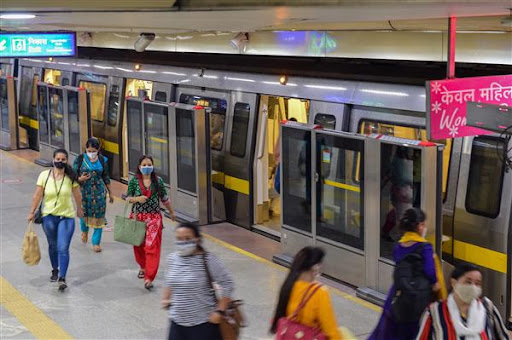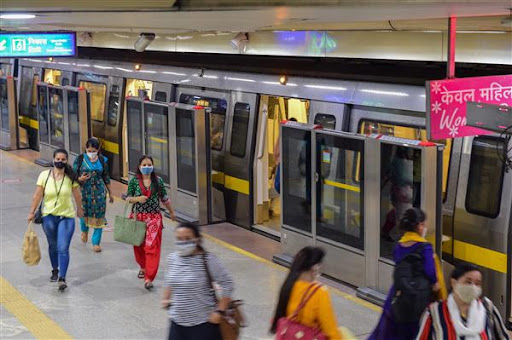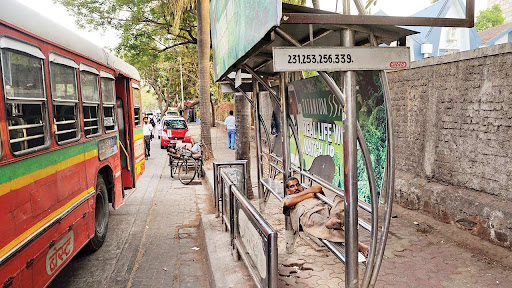
An efficient transportation system is indispensable for any kind of development at an individual, city, state and national level. Today’s unparalleled technology boom is changing mobility and communication. With this technology boom, it has become easier and possible to provide for and facilitate Persons with Disabilities, who were earlier barred from accessing many services and opportunities. Economic independence is a prerequisite for everybody to not only fulfil their basic survival needs but also for growing and moving up the socio-economic ladder with time. An inclusive transport system ensures access to places of paramount importance that hold the key to the socio-economic and inclusive development of all individuals. This is rightly elaborated by Charlotte McClain-Nhlapo, Global Advisor on Disability, World Bank, "You have to think of transport as an equalizer, a catalyst that facilitates access to many other sectors. Mobility improvements are key because transport gives you access to jobs, schools, healthcare, markets, and leisure".
International Urban Mobility and Inclusivity
Seattle and Washington D.C. are two among many international examples of transport inclusivity and PwD friendliness in urban mobility. Seattle's rail systems make access to the transport vehicle manageable through the provision of lifts and escalators right up to the point of boarding the rail cars. Accessing the rail car can be challenging due to an ill-designed threshold posing danger to anyone’s life, hence, to minimize this threat and ensure ease of access, the rail car floor is at the same level as the platform without any gaps between the platform and the rail. Furthermore, there are wheelchair taxis available with ramps at the door for moving in and out with ease. Seattle's Sound Transit(ST) Express buses have lower floors, equipped with ramps to climb inside, other than this moving, standing, sitting and balancing inside the bus is supported by handrails and straps. There are two points inside all the buses where passengers using wheelchairs or other mobility devices can secure themselves for a safe and comfortable ride. For all the above-mentioned transport systems, trained operators and conductors are present to offer assistance for getting on and off the vehicles upon request from passengers. Apart from this, all buses and trains in Seattle display visual and auditory announcements about upcoming stops and stations.
Washington D.C. is considered to be one of the most disabled-friendly and accessible cities in the world. It has good accessibility across the available transportation systems similar to Seattle's and also features a designated handicap parking facility for double the metered time or in time-restricted spaces. Along with PwD sensitive physical infrastructure with wheelchair lifts extending up to platforms it also provides discounted fares to PwDs through its Metro Disability ID Card. The city has a considerable amount of scooters, wheelchairs and knee-walker rental services with flexible rental timings available in the city. These services and PwD friendly infrastructure of Washington D.C. makes its tourist spots very well connected, paving a way for social inclusion.
Indian Urban Mobility and Inclusivity
According to the Census of India 2011, there are over 26 million Persons with Disabilities (PwDs) i.e. 2.1 per cent of the total population. Of this, 30.5 per cent of the total PwD population reside in the urban areas, among which around 2.7 million is the working population meaning 33.3 per cent have access to some form of transport facilities for commuting. As India is addressing its rising transportation sector demand, many transport projects and major corridors for improved connectivity are being built with an emphasis on road and rail projects, specifically MRTS. Since some prevalent MRTS namely mono, metro rails and buses are successfully running in Tier 1 Indian cities, Tier 2 cities are also adopting them now to make the service accessible to everyone. Due to MRTS’s capability of transporting a higher amount of load at once and in a shorter period, it has proven to not only sustain the environment but also sustain any marginalised community by empowering them socio-economically. If an average transportation system creates hurdles and daily struggles for its commuters, then, for Persons with Disabilities (PwDs) it translates into the transportation service either becoming difficult to use or non-usable at all. Hence, extending the MRTS service for Persons with Disabilities becomes important.
India has largely remained clouded by religious and spiritual beliefs asserting that PwDs deserve the fate they are bestowed with. Along with this, stigmas such as ‘PwDs cannot carry out tasks on their own’ still exist, which automatically gives rise to the idea that they require constant human support to do most of the activities. As a result of this sympathetic gaze, negligence towards creating infrastructure is seen due to either lack of knowledge or due to doubts surrounding that it will be seldomly used. Such conditions make creating and ensuring the use of services meant for societal upliftment difficult. To ensure the usage of these public services, creating awareness and making the services accessible by law are the first two steps that must be worked upon simultaneously. In India, a considerable amount of shift has been seen with regards to this aspect. To urge social inclusion of PwDs, today, almost all MRTS have seats reserved for the PwDs in comparison to the earlier few systems adopting it.
Existing Infrastructure of Metro Systems and BRTS in India

Source: All Delhi Metro lines to operate from Saturday. The Tribune. 17th September 2017.
Retrieved from: All Delhi Metro lines to operate from Saturday : The Tribune India
The metro system is one of the latest and fastest emerging transportation systems in many cities of India and is instrumental in pushing easy accessibility due to its design. Metro stations in India are designed on broadly three levels i.e entry/exit as the first level on the ground, ticket booth at the middle level and metro platform at the third level. In the case of the underground metro, the platform becomes the lowest level and vice versa in the case of an overhead metro. Owing to the requirement of building new infrastructure, all metro stations now have facilities as per the national standards meant for PwDs including facilities like lifts and escalators for accessing the metro train. Further on, all metro stations now have tactile flooring with effective signboards laid throughout the station for all functions and services. Apart from this, effective infrastructure for audio announcements is also present. The other important and much-required change which is making moving a wheelchair in and out of the metro car easier is the new design where the level of the metro car and the platform is the same, featuring a lesser gap between them. After getting in, reaching the reserved seats is easier as the seats are sensitively reserved near the entry and exit points of the transport cars. In cities like Mumbai, where the population using these systems is huge, assistants to aid passengers like PwDs are present.
The other MRTS which is being widely used in India is the Bus Rapid Transit System (BRTS). Similar to the metro rail cars, the BRTS also has reserved seats near the entry/ exit point. In contrast to the heavy infrastructure required at every metro station/stop, bus stops and bus depots require minimal infrastructure and are comparatively easier to build, manage and operate. They play an important role in transporting passengers on the routes where the rail system cannot. With time, owing to the infrastructure upgrade, bus frequency has also improved. This also includes the provision of digital infrastructure to know bus timings and track them in real-time. Since bus stops are designed to be located on the footpath, few cities like Pune have provided tactile flooring throughout the footpath stretch in certain parts of the city to make bus stops accessible.
MRTS Components requiring Inclusivity
Though the infrastructure of metro and bus systems have improved considerably, more components require upgradation to make these systems safe and inclusive holistically because providing accessibility with safety not only increases the availability and usability of services but also increases their functionality.
In metro systems, accessibility still remains a challenge for many PwDs. The entry point of the metro stations consisting of the lifts, escalators and staircases are located on the footpath. Often, the footpath area around them is undulated and lacks tactile flooring hindering accessibility. Along with this, since in many cities, lifts and escalators at the entry point need to be protected against flooding, they are raised on a plinth at a higher level from the footpath. This rise must be supported by ramps, but in some cases, it is raised with stairs instead of ramps to climb up, making accessibility difficult. In these cases, it is important that guidelines for universal accessibility are mandatorily followed and the building infrastructure created is executed skill fully and with precision.
Furthermore, all metro and monorail stations have well connected tactile flooring across all stations, but peak hours are bound to make navigation of these flooring strenuous. In the case of overhead metro systems, it is noticed that the lifts are present on the entry and ticketing centres only and do not extend up to the platforms making it difficult for the PwDs to reach the transportation cars, especially the ones requiring the wheelchair. Hence, to assist the PwDs in navigating their way during peak hours and for boarding the train, trained personnel should be made available and infrastructure upgradation should be done wherever possible.

Source: In 2019, bus stops to show buses' ETA. DNA. 14th March 2018.
Retrieved from: https://www.dnaindia.com/mumbai/report-in-2019-bus-stops-to-show-buses-e...
With regards to BRTS, many cities and state transport bus systems in India are still dependent on its old buses that continue to ply beyond their life shell of 12 years. Many older designed buses do not have ramps at the door, wider doors, lower floorboards, security belts and straps, and spaces to accommodate wheelchairs. The problem lies with the older design of the buses that are not compatible with the needs of PwDS and hence, replacement of bus fleets with new ones is bound to solve many problems related to accessibility. Since replacement of old buses at once with new fleets can put a strain on budget and fundings, it is recommended to undertake replacement partially where the oldest ones can be removed from the system while other buses simultaneously undergo servicing and maintenance. With proper planning, this would avoid a strain on budget while ensuring that buses are plying that allow accessibility in boarding.
Seats for PwDs are reserved near the door with a single handle to support themselves. Despite having a handle, sitting in front remains a risky business due to the jerks experienced while the driver pulls the brakes, takes a turn or changes the bus speed. For this, safety belts can be provided on the seats to minimize the effect of such actions.
Furthermore, as bus stops are located on the footpaths that are raised from the road level, it becomes difficult for PwDs to climb up and reach the bus stop. For this, to smoothen the rise, footpath ends must be sloped below towards the road with tactile flooring provided to navigate the footpath and the bus stop throughout its length. This would ensure the passenger to safely stand on the bus stop rather than the road and avoid any dangerous situations. The other problem related to boarding the bus is the gap existing between the bus and the bus stop level which is higher in the old buses. For this, the bus stop can be designed in a way that either has the same level as that of the bus, or there is a provision of ramps.
Information about buses, stops, depo and routes must be digitised. This would ensure access to information for everyone and would also allow one to track buses in real-time as their frequency gets affected due to the traffic jams, especially during peak times. Along with these solutions, it is important to have trained personnel to aid PwDs, both temporary and permanent, to gain access to BRTS, particularly in the case of older buses.
The Banner of Change
Raising awareness about accessibility is an incremental process and requires both physical infrastructural and behavioural changes. India has envisaged and executed numerous policies and acts for the welfare of PwDs which has played an important role in convincing the masses to use the provided infrastructures like special schools, pension schemes, the inclusion of toilets for disability, etc. Being a country that has remained biased towards PwDs due to superstitious beliefs, the policies have laid the foundation for the current efforts being made for inclusivity, a proof of relative behavioural change towards them.
The document ‘Harmonised Guidelines and Space Standards for Barrier Free Built Environment for Persons with Disability and Elderly Persons’ has many infrastructural provisions and services mentioned in detail for easing accessibility and making spaces usable by PwDs. Often it is noticed that these standards are not followed on-site which hinders universal accessibility, hence, it is important to ensure that built environments are inclusive of these standards. The scenario is expected to improve more with the RPwD Act under the Constitution of India, SDG Goals and 'Accessible India Campaign' i.e. 'Sugamya Bharat Abhiyan' as it aims to enhance the accessibility of the built environment, transport system and information and communication ecosystem.
Bio of the Author:
Monica Thakur is an architect who loves to explore aspects that shape built environments, the people who occupy them. She has worked in the sectors of water, heritage conservation and urban planning. She expresses her findings of design, architecture and urban planning in the form of writing.
References:
- Department of Empowerment of Persons with Disabilities. Ministry of Social Justice & Empowerment, Government of India. July 14, 2021. Retrieved from: | Department of Empowerment of Persons with Disabilities | MSJE | GOI (disabilityaffairs.gov.in)
- "For Persons with Disabilities, Accessible Transport Provides Pathways to Opportunity." The World Bank. December 3, 2015. Retrieved from: For Persons with Disabilities, Accessible Transport Provides Pathways to Opportunity (worldbank.org)
- Department of Empowerment of Persons with Disabilities. Ministry of Social Justice & Empowerment, Government of India. March 03, 2021. Retrieved from: SIPDA | Department of Empowerment of Persons with Disabilities | MSJE | GOI (disabilityaffairs.gov.in)
- Srinidhi Raghavan. “For deafblind individuals in India, grappling with twin challenges of stereotypes and inaccessibility hinders true progress.” Firstpost. June 29, 2021. Retrieved from: For deafblind individuals in India, grappling with twin challenges of stereotypes and inaccessibility hinders true progress-Living News, Firstpost
- Ashish Verma. “Quality of life, liveability should be central goal in urban development intervention.” The Hindu. December 25, 2019. Retrieved from: Quality of life, liveability should be central goal in urban development intervention - The Hindu
- Anant Tibrewal. “The Slow March Of Progress: An Overview Of The History Of Disability Legislation In India.” American India Foundation. July 20, 2020 Retrieved from: https://aif.org/the-slow-march-of-progress-an-overview-of-the-history-of-disability-legislation-in-india/
- Accessible India Campaign. November 26, 2016.
Retrieved from: Transport Systems: Accessible India Campaign - N For Nose, State of the Education Report for India 2019, Children with Disabilities. UNESDOC Digital Library. 2019. Retrieved from: https://unesdoc.unesco.org/ark:/48223/pf0000368780?posInSet=1&queryId=61d8f754-79af-400a-ae81-8b3700e24397
- Pawan Mulukutla, Priyanka Vasudevan. “Increasing Mode Share of Bus Transport in Indian Cities.” WRI India. January 15, 2015. Retrieved from: Increasing Mode Share of Bus Transport in Indian Cities | WRI INDIA (wri-india.org)
- “India Transportation.” The World Bank. September 23, 2011 Retrieved from: India Transportation (worldbank.org)
- SoundTransit. Retrieved from: Transit accessibility | Fully accessible for all | Sound Transit
- Dipti Jain. “How disabled friendly are India’s cities?” Livemint. March 31, 2016. Retrieved from: How disabled friendly are India’s cities? (livemint.com)
- “IT sector gets a bit disabled friendly.” The Hindu. June 24, 2017. Retrieved from: IT sector gets a bit disabled friendly - The Hindu
- Sweta Goswami. “For the first time, entire bus fleet operated by DTC declared ‘overage’” Hindustan Times. July 26, 2021. Retrieved from: For the first time, entire bus fleet operated by DTC declared ‘overage’ | Latest News Delhi - Hindustan Times
Add new comment